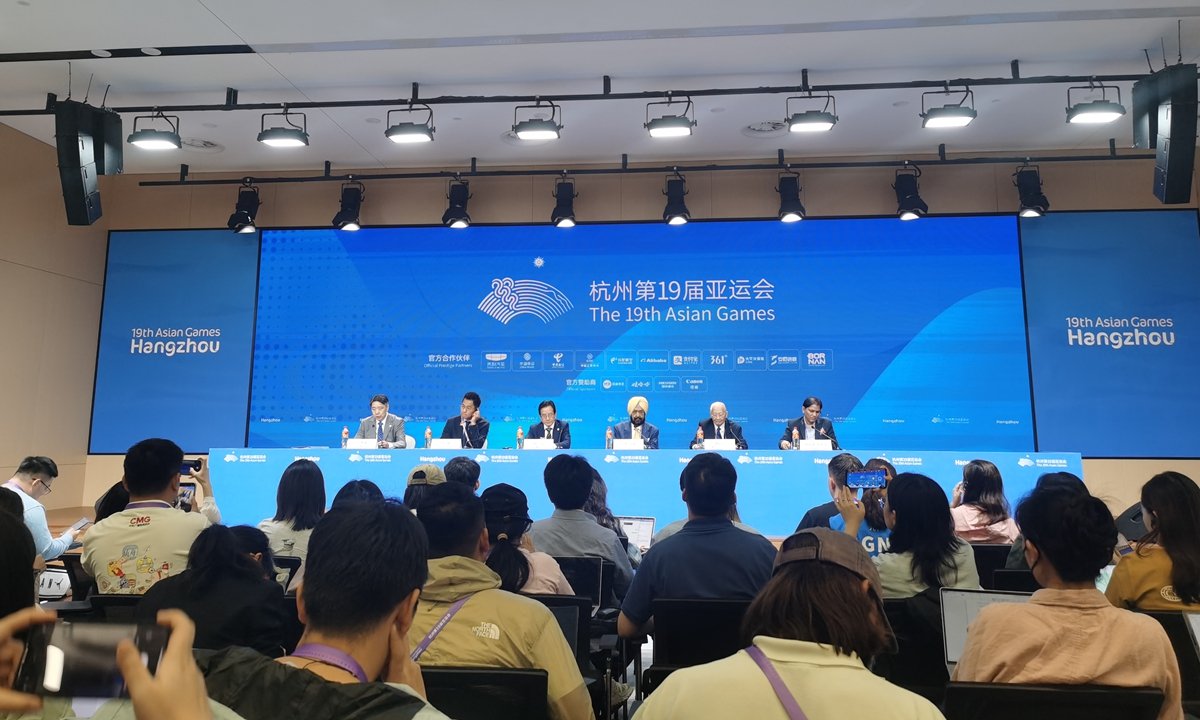The Hangzhou Asian Games has received an overwhelming thumbs-up from the Acting President of the Olympic Committee of Asia, Raja Randhir Singh. In a recent news conference, Singh heaped praises on the grandeur of the event, highlighting the spectacular opening ceremony and expressing admiration for the innovations, particularly the contactless participant ID cards.
Recalling the splendor of the opening night, Singh’s enthusiasm was palpable. He described the ceremony as “absolutely phenomenal.” Such events are monumental, showcasing not just the spirit of the games but also the cultural ethos and technological prowess of the host nation. For Singh, the Hangzhou Asian Games opening ceremony was a masterclass in these respects.
Expressing his gratitude and admiration, Singh extended his congratulations to the Hangzhou Asian Games Organizing Committee (HAGOC) and the Chinese government. Their collaborative efforts, he believed, had culminated in a ceremony that stood out in his memory as the “finest and most beautiful” he had ever witnessed. With a start as impactful as the opening ceremony, Singh shared his anticipation for the subsequent games, confident that they would follow the precedent of excellence.
The seamless functioning of such a large-scale event requires meticulous coordination. Singh was effusive in his acknowledgment of the harmony between the OCA and the Chinese organizers. He emphasized the continual teamwork and mutual support that ensured the smooth progression of the games. The establishment of dedicated working groups and a coordination committee ensured that any challenges were promptly addressed. Singh pointed out that, from his perspective, the collaboration was impeccable. The HAGOC consistently provided support, fulfilling the requirements of the national committees and other OCA members.
Yet, among the myriad elements of the event, what particularly caught Singh’s attention was an innovative gadget. Despite being a veteran of many games and having been the first Indian shooter to clinch a gold medal at the Asian Games in 1978, he found the contactless participant ID cards in Hangzhou to be a game-changer. Instead of the customary scan-and-wait procedure that athletes and participants were accustomed to, the Hangzhou edition ushered in a new era of efficiency.
The contactless ID cards, worn around the neck, streamlined access to venues. Singh appreciated this advancement, emphasizing its significance for athletes. Time is of the essence for competitors moving between venues, and these cards eradicated unnecessary delays. As he noted, athletes could effortlessly enter and exit venues, with their presence being instantly recorded. The innovation, in Singh’s words, brilliantly eliminated needless queues, facilitating smoother transitions and optimizing athletes’ schedules.
In summation, the Hangzhou Asian Games, with its combination of cultural richness, organizational prowess, and technological advancements, has set new benchmarks. For luminaries like Raja Randhir Singh, it represents the harmonious blend of tradition and innovation that the world of sports constantly strives for.
READ MORE:
